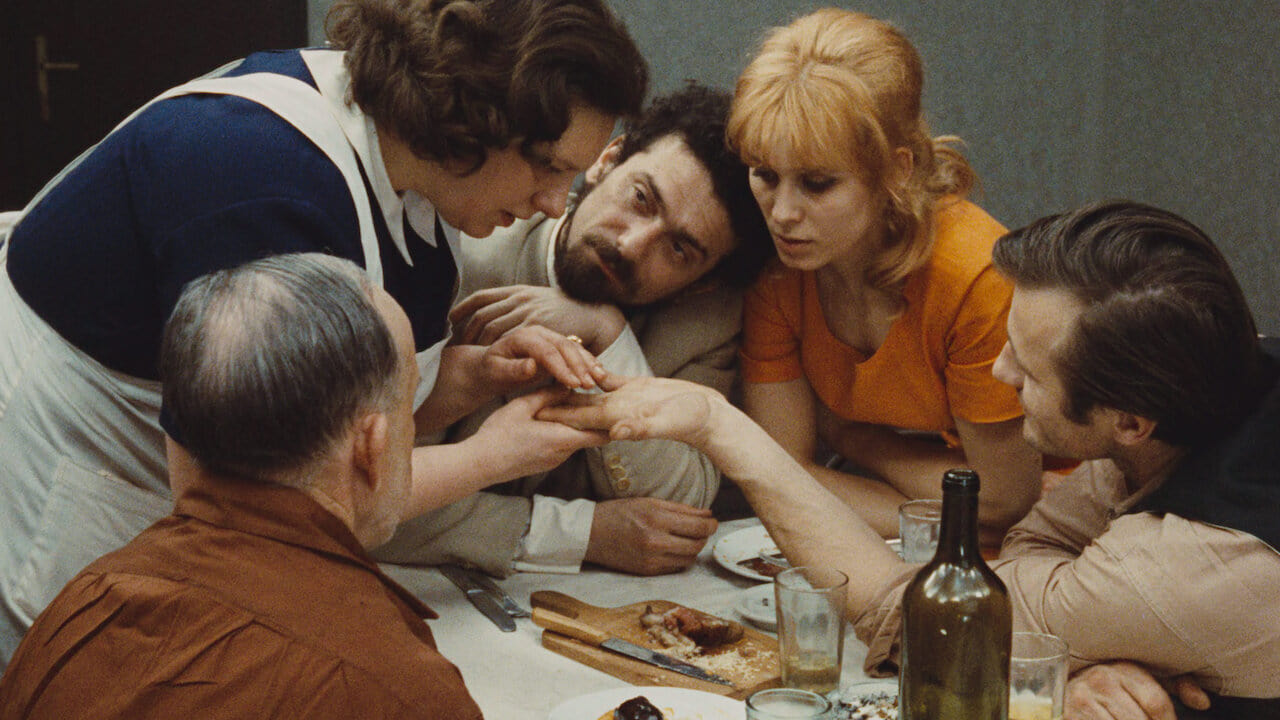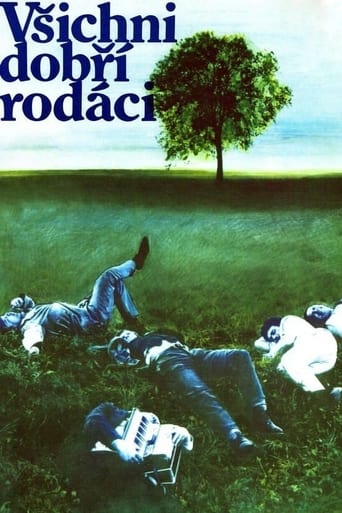

This may not be a good place to start to enjoy Czech film - there are more accessible New Wave films - but it is a very powerful film which should not be missed by anybody who has more than a passing familiarity with the country and its history. With actors such as Radoslav Brzobohatý, Vladimír Meník, a young Jíří Kodet, and the ever-popular singer and actor Waldemar Matuka, the film has a first-rate cast. In Jaroslav Kučera, it had a great cinematographer. Jasný was by now an accomplished screenwriter and, the countryside of the Pardubice region was as beautiful a backdrop as the machinations of the early communist period and, in particularly, the collectivisation of agriculture, were a fascinating subject. Still, the excellence of the film was not a given. The structure, given in large part by alternating dramatic changes of the environment as the seasons change and those first years after the communist takeover roll on, is effective and well-paced and permits a continuity of tone and subject with certain more episodic elements. The plot, on the page, might come across as busy, but on the screen, there is plenty of breathing space, and room for exquisite shots of the countryside, of work, even of play. So too does the heroic refusal to compromise of one of the characters, Frantiek, which becomes of increasing importance as the film moves into the mid 1950s, do nothing to detract from the well-balanced portrayal of the various characters of the village, described and referred to by their silly nicknames from the opening scenes in the months after the war. The history and fates of these characters are handled deftly, often with a brevity and telling detail of a John Cheever story. Neither is the film as unremittingly brutal as others handling similar material, such as the excellent, and thematically similar Smuteční slavnost of the following year. Like that film, I hope to return to Vichni dobří rodáci many times yet, and am sure it will repay repeated viewing.
... View MoreSatantango is my all-time favorite movie. It's about a small town and the dissolution of its collectivized farm after the end of communism. All My Good Countrymen (the title on my DVD, though listed on IMDb as All My Compatriots) is about a similar small town, but it's about the period of collectivization instead of de-collectivization. In All My Compatriots, there is a steady demoralization of the townspeople as the collectivization and politicization moves along from 1945 to 1958. If you follow that trajectory until the collapse of the Soviet Union, you get to the lethargic, soul-destroyed nadir from which Satantango begins. Even though All My Compatriots is about a Czech town, and Satantango takes place in Hungary, it's remarkable how similar the towns feel and how much the one movie feels like the continuation of the other.While Satantango is an unusually long movie (over 7 hours!), it felt like it moved along a lot faster than Compatriots. (Satantango isn't fast-paced by any means; but time goes by faster than in Compatriots because it manages to mesmerize in a way Compatriots does not.) Besides its slowness, Compatriots was also rather hard to follow. Nonetheless, Compatriots had a quirky quality I liked, and it's especially interesting as a movie made during the Prague Spring. Also, the town and landscape had a delightful Brueghel-like quality, and many of the faces made me feel like Fellini had managed to slip into Eastern Europe to shoot the close-ups.
... View MoreWhen you see "All My Compatriots" today, it seems like a reasonably innocuous film. However, back in the late 60s, it was quite radical because it did NOT show the post-war years in Czechoslovakia as a workers' paradise nor did it show a just system. So, in context, it's pretty interesting but it just seems to lose something here in 2011.The film picks up immediately after the Germans are forced out of Czechoslovakia and takes place in one small town. The folks are grateful for the Russians for liberating them and the future is very bright and hopeful. During much of the beginning of the film, the folks seem quite happy and celebrate the joy of living. However, the film is episodic and as the years pass, things turn a bit ugly. The town now has a new committee to enforce the Communist system--and it seems a bit capricious and is run by petty tyrants. Folks in the town who were nice folks at the film's beginning now let the power run to their heads. Still, despite this, life goes on and you see the town over a 15 year plus period of time.None of the film seemed especially exciting to me, though the beautiful red-head and the subsequent things that happen to each of her admirers is interesting--and possibly a metaphor for the nation as a whole...perhaps. A decent film but one younger audiences would probably not especially appreciate.cheesy goring scene
... View MoreAn excellent film that takes a group of villagers as allegorical characters for Czechoslovakian society. The film follows these people from post-WWII (and pre- communism) to the late 50s, watching as they and their village change. In terms of the unescapable creeping feeling of dread, I was reminded of Ang Lee's _The Ice Storm_. While the film is clumsy at times (some shots or plot shifts might have been done better), the cinematography can be very resourceful. Watch also for the classic symbols of Czech identity: the geese, the white horse (from the legend of Libuse), and the old women (from the Czech novel _Babicka_). These mirror the plot nicely.
... View More